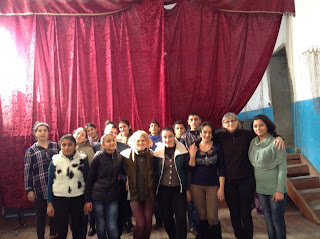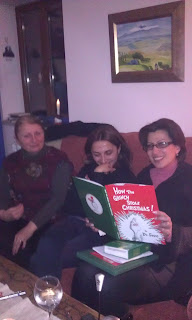This lavash hut is found outside of the village of Karakert in Armavir Marz - middle western Armenia. I visited this village and stayed with a host family there in their home.
Me outside the lavash hut... Notice the
fuel/twigs stored on top. The fuel is gathered
by the women.
Me and Peace Corps Volunteer, Andrea Grant..
Lavash is made in a round fire pit, with the diameter maybe 20 inches and about 2 feet deep. There are two other pits of the same size in the shed. These are for a place for the women to put their feet and lower legs while they are making the lavash so they are level with cooking fire pit. It takes two women together to make lavash.
Fire pit...
The fire is started by lighting cow dung patties which are dried and stored. Once the cow dung is lit well the fire is fed with gathered twigs from the trees in the fall. The shed gets incredibly smoky as the ventilation is only a hole in the roof. It was intolerable for me and I could not stay in the shed more than a few minutes once the fire was lit. These women sit in this dense smoke for hours while they make sometimes 150 pieces of lavash, almost every week. The women collectively make the lavash - 2 or three families together. It is not surprising therefore the frequency of lung cancer and early deaths 50s and 60s for these women.
Woman starting fire with cow dung patty...
Feeding the fire with twigs...
Fire heating up...
Lavash is always made by women - and usually the older women (grandmothers) in the family who reside with their families. The dough is prepared in huge tub with flour and water the night before the baking is to commence. Once woman tends the fire and baking (about 5 minutes against the wall of the pit) and another woman readies the dough into long oval very thin pieces. The bread after baking can be stored dried for up to 6 months or more. When it is ready to be eaten it is sprinkled with water to soften it and then cut into small pieces for eating.
Lengthening the piece of prepared dough...
Preparing the dough shape... Notice the
woman sitting with her legs down in a round pit..



















































